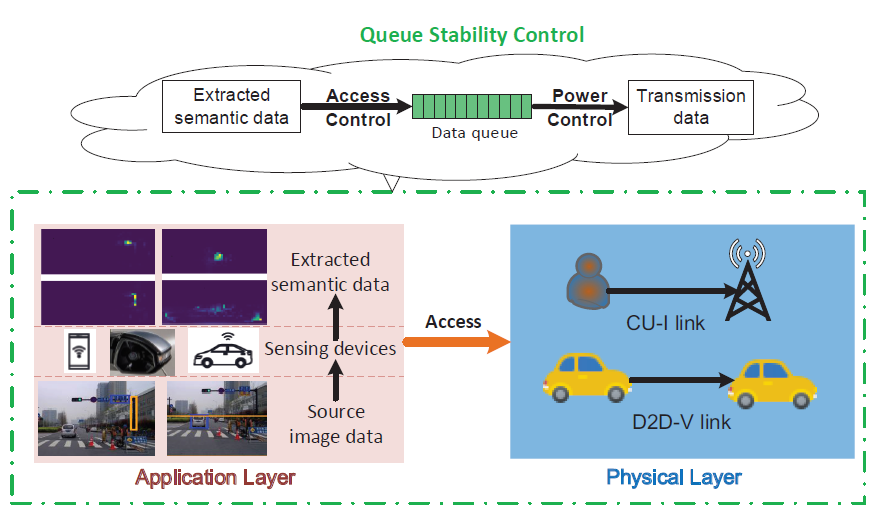Semantic Communication-Based Dynamic Resource Allocation in D2D Vehicular Networks
Published in IEEE Transactions on Vehicular Technology, 2023
Recommended citation: Jiawei Su, Zhixin Liu, Yuan-ai Xie, Kai Ma, Hongyang Du, Jiawen Kang, and Dusit Niyato. "Semantic Communication-Based Dynamic Resource Allocation in D2D Vehicular Networks." IEEE Transactions on Vehicular Technology (2023). https://ieeexplore.ieee.org/abstract/document/10073623?casa_token=8ojvmbirhSEAAAAA:rkhim4gBFsdlFFqtb9m93kcMsxkYM-PZBFWxgt4eCweLDUvyanka-ZE-Nei3PzA89dabEn021Q
Abstract: The semantic communication mechanism enables wireless devices in vehicular networks to communicate more effectively with the semantic meaning. However, in high-dynamic vehicular networks, the transmission of semantic information faces challenges in terms of reliability and stability. To address these challenges, a long-term robust resource allocation scheme is proposed under the Device-to-Device (D2D) vehicular (D2D-V) networks, where multiple performance indicators (user satisfaction, queue stability, and communication delay) are considered. Due to the sophisticated probabilistic form with consideration of channel fluctuations, the Bernstein approximation is introduced to acquire the deterministic constraint more efficiently. The robust resource allocation problem is proposed and separated into two independent subproblems by the Lyapunov optimization method, which includes semantic access control in the application layer and power control in the physical layer. After that, the successive convex approximation method and Karush-KuhnTucher conditions are adopted to solve the subproblems, thereby proposing a robust resource allocation algorithm. The simulations reveal the trade-off relationship between user satisfaction, queue stability, and communication delay, which is on the premise of meeting the user SINR requirement. Moreover, the simulations also prove the necessity of considering channel uncertainty in high-speed mobile vehicular communication scenarios.
Index Terms: Vehicular networks, Semantic communication, Resource allocation, Lyapunov optimization, D2D technology.

Fig. 1: Semantic communication-based cross-layer optimization model.
